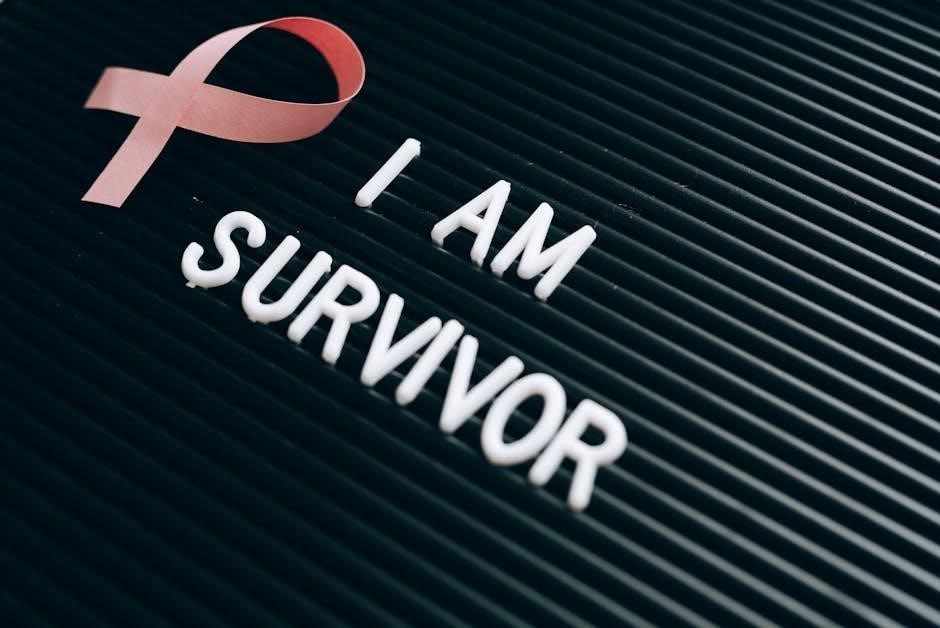Malala Yousafzai’s memoir, I Am Malala, recounts her courageous fight for girls’ education under Taliban rule in Pakistan, surviving an assassination attempt, and becoming a global advocate for equality and education.
Overview of the Book
I Am Malala is a memoir co-authored by Malala Yousafzai and Christina Lamb, detailing Malala’s journey from her childhood in Swat Valley to her global advocacy for girls’ education. The book recounts her early life under Taliban rule, her father’s influence, and her defiance against the ban on girls’ education; It vividly describes the assassination attempt, her miraculous recovery, and her subsequent rise as a global symbol of courage and equality. The memoir offers insights into her beliefs, struggles, and unwavering commitment to education as a universal right.
Malala Yousafzai’s Global Impact
Malala Yousafzai’s advocacy for girls’ education has inspired millions worldwide, making her a global symbol of courage and equality. Her message has resonated across cultures, sparking conversations about education as a fundamental human right. Through her speeches, including her iconic UN address, Malala has mobilized international support for girls’ education. Her influence extends beyond education, representing a broader fight for human rights and gender equality. The Malala Fund, which she co-founded, works in over 10 countries to break barriers to education. Her global impact continues to grow, shaping a movement for a more equitable future.

Early Life and Background
Malala Yousafzai was born in Swat Valley, Pakistan, to a family advocating for girls’ education. Her father, Ziauddin, ran a school, fostering her early passion for learning and equality.
Birth and Family in Swat Valley
Malala Yousafzai was born on July 12, 1997, in Mingora, Swat Valley, Pakistan. Her father, Ziauddin Yousafzai, was an educator and activist who ran a local school. Malala’s birth coincided with the rise of the Taliban in the region. She was named after Malalai of Maiwand, a Pashtun heroine, symbolizing courage. Her family valued education and equality, with her father advocating for girls’ schooling. Malala grew up with two younger brothers in a culture rich in tradition but increasingly threatened by extremism.
Malala’s Father and His Role in Education
Ziauddin Yousafzai, Malala’s father, was a dedicated educator and activist who owned a school in Swat Valley. He believed deeply in the power of education to transform lives and advocated for girls’ education, defying Taliban restrictions. Ziauddin’s passion for learning and his defiance of oppressive norms heavily influenced Malala’s early activism. His school provided a space for children to thrive, and his teachings instilled in Malala the courage to stand up for what she believed in, even in the face of danger.
Cultural and Religious Context of Her Upbringing
Malala was raised in Swat Valley, a region rich in Pashtun culture and Islamic traditions. Her family practiced moderate Islam, emphasizing education and equality. Ziauddin, her father, encouraged her to question and understand her faith rather than blindly follow it. The cultural values of hospitality, respect, and community shaped her worldview. Despite Taliban efforts to impose strict interpretations of Islam, Malala’s upbringing fostered a belief in the importance of education and equality, inspiring her advocacy for girls’ rights.

The Rise of the Taliban in Swat Valley
The Taliban exploited local grievances and instability, gradually seizing control of Swat Valley. They imposed strict Islamic laws, using fear and violence to establish dominance.
Taliban Takeover and Restrictions
The Taliban’s takeover of Swat Valley brought harsh restrictions, banning music, TV, and women from public spaces. They enforced strict Islamic laws, destroying schools and intimidating locals. Fear gripped the region as the Taliban imposed their interpretation of Sharia, targeting modernity and girls’ education. Their rule was marked by brutal punishments, creating an atmosphere of terror. Malala’s father openly criticized these oppressive measures, while the Taliban’s destruction of schools escalated tensions, setting the stage for Malala’s defiance.
Bans on Girls’ Education
The Taliban issued an edict in 2008 banning girls from attending school, deeming it un-Islamic. This decree directly targeted female education, forcing schools to shut down. Malala and her father defied the order, continuing to advocate for girls’ education despite the risks. The ban not only deprived thousands of girls of learning but also fueled widespread fear and oppression. Malala’s defiance in the face of these restrictions highlighted the severity of the Taliban’s efforts to control women’s lives and suppress education for girls.
Malala’s Early Activism
Malala began advocating for girls’ education at just 11 years old. In 2008, she delivered a speech titled “How Dare the Taliban Take Away My Basic Right to Education!” This courageous act drew attention to the Taliban’s oppressive policies. She also wrote a blog for the BBC, detailing life under Taliban rule and the fight for girls’ education. Her early activism, supported by her father, showcased her determination to challenge injustice, even in the face of danger.

Malala’s Advocacy for Girls’ Education
Malala championed girls’ education globally, emphasizing its transformative power. Her mission inspired millions, challenging societal norms and advocating for equal educational opportunities for all girls worldwide.
Her Blog for the BBC
At just 11 years old, Malala began writing a blog for the BBC Urdu service under the pseudonym Gul Makai. She documented her life under Taliban rule, highlighting their efforts to ban girls from attending school. The blog revealed her fears, hopes, and determination to pursue education despite the dangers. It quickly gained international attention, showcasing her courage and sparking global interest in her story. This platform became a catalyst for her advocacy, amplifying her voice and inspiring others to join her fight for girls’ education.
Public Speaking and Media Attention
Malala’s public speaking engagements brought her story to global audiences. Her 2008 speech in Peshawar, “How Dare the Taliban Take Away My Basic Right to Education!” highlighted her defiance. Media coverage of her advocacy grew, making her a symbol of resistance against oppression. Interviews and appearances on local and international platforms amplified her message, drawing attention to girls’ education. Her eloquence and courage captivated listeners, turning her into a global icon. The media spotlight further solidified her role as a leader in the fight for educational equality.
Death Threats and Risks
Malala faced increasing death threats as her activism gained momentum. The Taliban, angered by her defiance, issued warnings and vowed to kill her. Despite the risks, Malala continued her advocacy, believing education was worth fighting for. Her father, Ziauddin, also received threats, but the family refused to back down. The dangers escalated, with the Taliban even planning to attack her on her way to school. Malala’s courage in the face of death threats underscored her commitment to girls’ education and her belief in the power of her voice.

The Assassination Attempt
In 2012, the Taliban ambushed Malala’s school bus, shooting her in the head. The attack sparked global outrage and solidarity for her cause.
The Attack on Malala
In October 2012, Malala was shot by the Taliban while returning from school in Swat Valley. The Taliban ambushed her school bus, specifically targeting her for her advocacy. One bullet hit her in the head, and two other girls were injured in the attack. The assassination attempt shocked the world, sparking widespread condemnation. Malala’s survival was seen as a miracle, and the incident became a catalyst for global solidarity in the fight for girls’ education and against extremism.
Medical Emergency and Survival
After the attack, Malala was rushed to a hospital in Peshawar, where she underwent emergency surgery to stabilize her condition. A portion of her skull was removed to relieve swelling, and she was placed in a medically induced coma. She was later airlifted to a specialized hospital in Islamabad and then to England for further treatment. Against all odds, Malala survived the life-threatening injuries, captivating the world with her resilience. Her recovery was seen as a testament to her strength and determination.
Global Reaction to the Attempted Assassination
The attempted assassination of Malala sparked widespread outrage and solidarity worldwide. Leaders and citizens alike condemned the Taliban’s brutality, while prayers and support poured in for her recovery. The attack drew global attention to the plight of girls’ education in regions under Taliban influence. Malala’s near-death experience became a rallying cry for human rights, uniting people across cultures and religions. Her survival symbolized hope and resilience, cementing her role as a global advocate for education and equality.

Recovery and Global Recognition
Malala’s recovery captivated the world, as her advocacy for girls’ education resonated globally, inspiring millions and solidifying her role as an international symbol of courage and equality.
Medical Treatment in England
After the assassination attempt, Malala was airlifted to England for advanced medical care. She was admitted to Queen Elizabeth Hospital in Birmingham, where she underwent specialized neurosurgery and rehabilitation. Her recovery was nothing short of miraculous, captivating global attention and solidifying her status as a symbol of resilience. The expertise of British doctors and the state-of-the-art facilities played a crucial role in saving her life and enabling her to continue her advocacy work. Her survival became a beacon of hope worldwide.
Malala’s Speech at the UN
On her 16th birthday, Malala delivered a powerful speech at the United Nations, advocating for universal access to education. She declared, “One child, one teacher, one book, and one pen can change the world.” Her address, attended by 500 young leaders from 100 countries, emphasized equality and education as the foundation for global progress. This speech cemented her role as a global advocate, inspiring millions and furthering her mission to ensure every child, especially girls, can attend school without fear or restriction.
International Advocacy and Awards
Malala’s global acclaim grew as she received prestigious awards for her tireless advocacy. In 2014, she became the youngest Nobel Peace Prize laureate, sharing the honor with Kailash Satyarthi for their efforts to protect children’s rights. She was also named one of Time Magazine’s 100 most influential people. Malala’s work has inspired global leaders to prioritize education, particularly for girls, leading to significant policy changes worldwide. Her efforts continue to drive international campaigns, solidifying her role as a leading voice in the fight for equality and education.

The Nobel Peace Prize
Malala Yousafzai won the Nobel Peace Prize in 2014 at 17, alongside Kailash Satyarthi, recognizing her global advocacy for girls’ education and children’s rights.
Winning the Nobel Peace Prize at 17
At just 17, Malala Yousafzai became the youngest Nobel laureate, sharing the 2014 Peace Prize with Kailash Satyarthi. This milestone recognized her tireless efforts for girls’ education and children’s rights. The award underscored her global influence and resilience after surviving the Taliban’s assassination attempt. It symbolized hope for millions of girls denied education worldwide. Malala’s achievement inspired widespread admiration, cementing her status as a symbol of courage and advocacy for equality in education.
Significance of the Award
The Nobel Peace Prize awarded to Malala Yousafzai symbolized global recognition of her fight for education and equality. As the youngest laureate, she inspired millions, proving age is no barrier to making a difference. The award amplified her message, challenging gender inequality and advocating for universal education. It underscored the power of individual activism to drive global change, solidifying her role as a beacon of hope for marginalized communities worldwide. The prize remains a testament to her unwavering dedication and courage.
Continued Advocacy After the Prize
Malala Yousafzai’s advocacy only intensified after winning the Nobel Peace Prize. She continued to champion girls’ education globally, founding the Malala Fund to support education initiatives. Malala traveled extensively, meeting world leaders to advocate for policy changes. Her efforts led to the establishment of schools in regions where education was denied, particularly in conflict zones. Her unwavering resolve has made her a powerful symbol of resilience and a driving force for education as a fundamental human right.

The Book “I Am Malala”
The book, co-authored with Christina Lamb, recounts Malala’s journey, emphasizing her fight for girls’ education and survival, inspiring global change through her story.
Co-Authorship with Christina Lamb
Malala collaborated with British journalist Christina Lamb to write I Am Malala. Lamb’s expertise in storytelling helped shape Malala’s recounting of her experiences, blending personal narratives with broader cultural and political context. Their partnership ensured the book’s accessibility and emotional depth, making Malala’s voice resonate globally. Lamb’s contributions were pivotal in transforming Malala’s story into a compelling memoir that highlights her courage and vision for girls’ education.
Structure and Key Themes
I Am Malala is structured to reflect Malala’s journey from her early life in Swat Valley to her global advocacy. The book begins with her childhood, highlighting her father’s influence and the cultural context. It then delves into the Taliban’s rise, their edicts against girls’ education, and Malala’s defiance. Key themes include courage, resilience, and the fight for equality. The memoir also explores her near-death experience, recovery, and subsequent global impact, emphasizing education as a universal right. The narrative blends personal and political elements, inspiring readers worldwide.
Reception and Reviews
Malala’s memoir became an international bestseller, inspiring millions with its powerful narrative. The book is a haunting yet hopeful account of her journey, emphasizing themes of courage and resilience. It received widespread critical acclaim for its raw honesty and emotional depth. However, it also sparked debates, particularly in conservative circles, due to its critique of cultural and religious norms. Despite this, I Am Malala remains a significant work, reflecting her global influence and the ongoing fight for girls’ education, resonating with readers worldwide.

Malala’s Continued Activism
Malala continues to advocate for girls’ education globally, facing challenges and criticism while maintaining her dedication to equality and human rights, inspiring countless individuals worldwide.
Founding the Malala Fund
The Malala Fund, established in 2013, aims to provide education to girls in countries where it is denied or difficult to access. Malala and her father, Ziauddin, co-founded the organization to address systemic barriers to girls’ education globally. The fund supports local educators and advocates, amplifying their efforts through resources and partnerships. By focusing on regions like Afghanistan, Pakistan, and India, the fund emphasizes the importance of education as a tool for empowerment and equality, aligning with Malala’s unwavering commitment to girls’ rights worldwide.
Global Campaign for Girls’ Education
Malala’s global campaign for girls’ education extends beyond local initiatives, targeting systemic changes worldwide. Through partnerships with governments and international organizations, she advocates for policy reforms that ensure girls’ access to education. Her efforts have led to increased enrollment rates in several countries and influenced legislation supporting gender equality in education. By collaborating with local communities and amplifying their voices, Malala’s campaign fosters grassroots change, demonstrating the power of collective action in achieving global educational equity effectively.
Challenges and Criticisms
Malala has faced criticism for being perceived as a Westernized figure, with some arguing her message aligns too closely with Western ideals. Critics in Pakistan accuse her of oversimplifying complex issues and ignoring local nuances. Additionally, her global prominence has led to questions about why other activists in similar situations receive less attention. Some also doubt the practical impact of her advocacy, suggesting it lacks depth in addressing systemic inequalities. Despite these criticisms, Malala remains a powerful symbol of resilience and change.

Cultural and Global Reception
Malala’s global fame sparked admiration and criticism. Internationally, she is hailed as a symbol of courage, inspiring millions. In Pakistan, her image is polarizing, with some questioning her representation and motives, reflecting broader cultural and political complexities surrounding her advocacy.
Reception in Pakistan
In Pakistan, Malala’s story has sparked mixed reactions. While many admire her bravery and advocacy, others criticize her for being a tool for Western agendas. Some view her as a national hero, celebrating her resilience against oppression. Conversely, critics argue her global fame overshadows local issues. The Taliban continues to denounce her, labeling her a traitor. These divided opinions highlight the complexities of cultural and political dynamics in Pakistan, where Malala’s image evokes both pride and skepticism among different segments of society.
International Fame and Recognition
Malala’s bravery and advocacy earned her global acclaim, transcending borders and cultures. Her survival and continued activism inspired millions, making her a symbol of courage and resilience. International media highlighted her story, amplifying her message of equality and education. She became the youngest Nobel laureate, further cementing her global influence. Malala’s voice resonates worldwide, inspiring movements for girls’ education and challenging oppressive systems. Her international recognition has made her a powerful advocate, uniting people across the globe in the fight for educational rights and gender equality.
Malala as a Cultural Icon
Malala Yousafzai has transcended her role as an activist to become a cultural icon, symbolizing resilience and courage. Her image, often associated with her scarf and determined gaze, has become a global symbol of defiance against oppression. Beyond activism, Malala’s story has inspired art, literature, and media, cementing her status as a cultural phenomenon. Her ability to bridge East and West, tradition and modernity, has made her a relatable and inspiring figure worldwide. Malala’s cultural impact extends beyond education, representing hope and the power of individual agency in the face of adversity.
Malala’s story concludes with her survival and continued advocacy, leaving a lasting impact on global education and human rights, inspiring hope and change worldwide.
Legacy of Malala’s Story
Malala’s survival and advocacy have cemented her legacy as a symbol of courage and resilience. Her story highlights the power of education and equality, inspiring global change. By challenging oppression and advocating for girls’ rights, Malala has become a beacon of hope for marginalized communities worldwide. Her message transcends borders, emphasizing education as a weapon against injustice. Through her journey, Malala has left an indelible mark on humanity, proving that one voice can spark transformation and create a lasting legacy for future generations.
Impact on Girls’ Education Worldwide
Malala’s advocacy has significantly advanced girls’ education globally, inspiring millions to demand their right to learn. Her efforts led to increased awareness and policy changes in countries where girls were denied education. The Malala Fund, her organization, works tirelessly to remove barriers to education for girls in underserved regions. Her influence has resulted in higher enrollment rates and a growing recognition of education as a fundamental human right, proving that collective action can drive meaningful change for girls worldwide.
Future of Her Advocacy
Malala’s advocacy for girls’ education is expected to expand, focusing on systemic change and global partnerships. She aims to amplify voices of marginalized girls and push for policy reforms worldwide. Through the Malala Fund, she plans to target regions with the highest barriers to education, ensuring access for all girls by 2030. Her future efforts will emphasize collaboration with governments, educators, and communities to create sustainable solutions. Malala’s vision is to empower girls to become leaders, fostering a brighter future for generations to come.
